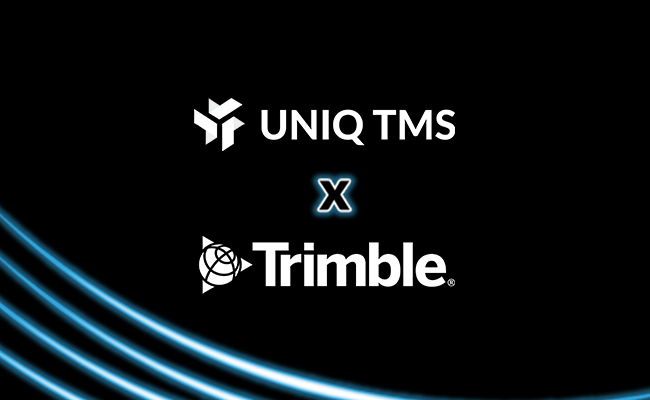
In today’s fast-paced world of global logistics, having an efficient Transportation Management System (TMS) is crucial for businesses of all sizes.
A well-implemented TMS system can streamline operations, increase visibility, and improve customer satisfaction. However, with so many options available in the market, choosing the right TMS system for your business can be a daunting task.
Let’s simplify this process for you and discuss the basics of a TMS system, key features to look for, evaluating different TMS systems, and making the final decision.
Importance of a TMS System in Business Operations
A TMS system offers numerous benefits that contribute to enhancing business operations. Firstly, it optimizes routes and consolidates shipments, resulting in reduced transportation costs. By utilizing advanced algorithms and optimization techniques, a TMS system helps businesses find the most cost-effective transportation options.
Moreover, a TMS system provides complete visibility into the transportation process. It allows businesses to track shipments in real-time, monitor delivery performance, and proactively address any issues that may arise. This not only improves customer satisfaction but also helps in identifying areas for operational improvement–helping your business attract more customers in the long run.
Furthermore, a TMS system enables businesses to automate repetitive tasks, such as generating shipping documents and invoices. Nobody wants to sit around creating invoices or shipping labels all day–so why not let a TMS system do that for you?
This not only saves time but also reduces the likelihood of errors and enhances overall efficiency for you and your employees.
In addition to these benefits, a TMS system also plays a crucial role in ensuring regulatory compliance. With ever-changing transportation regulations and requirements, businesses need a system that can keep up with the latest updates and help them stay in compliance.
A TMS system can automatically apply the necessary rules and restrictions, ensuring that shipments are in line with legal and safety requirements.
Another advantage of using a TMS system is the ability to analyze and leverage data for strategic decision-making.
By capturing and analyzing transportation data, businesses can identify trends, patterns, and areas for improvement. This valuable insight can be used to optimize operations, negotiate better rates with carriers, and identify opportunities for cost savings.
Lastly, a TMS system promotes collaboration and communication among different stakeholders.
By providing a centralized platform, it enables seamless communication between shippers, carriers, and other parties involved in the transportation process. This improves coordination, reduces delays, and ensures that everyone is on the same page at every point in the shipping process.
Key Features to Look for in a TMS System

Now that we’ve considered how TMS can positively affect your business operations, let’s delve into the key features to consider when choosing a TMS system for your business.
Transportation Management Systems (TMS) play a crucial role in streamlining logistics operations and optimizing supply chain efficiency. When evaluating TMS system, options, there are several key features that can significantly impact the effectiveness of your transportation management strategy.
Integration Capabilities
One of the critical features to look for in a TMS system is its integration capabilities. A robust TMS system should be able to seamlessly integrate with other software solutions, such as Enterprise Resource Planning (ERP) systems, Warehouse Management Systems (WMS), and Electronic Data Interchange (EDI) systems. Integration allows for the seamless flow of data across systems, eliminating manual data entry and reducing errors.
Furthermore, integration capabilities extend beyond internal systems to include connectivity with external partners, carriers, and suppliers. A TMS that can integrate with a wide network of stakeholders enables real-time visibility into shipments, enhances collaboration, and improves decision-making processes.
User-Friendly Interface
Another important aspect to consider is the user-friendliness of the TMS system. A user-friendly interface ensures that staff members can easily navigate and utilize the system without extensive training. Look for a TMS system that offers customizable dashboards, intuitive workflows, and clear instructions.
In addition to ease of use, a well-designed user interface can enhance productivity by providing quick access to key information, facilitating rapid decision-making, and promoting user adoption across different departments within the organization.
Scalability and Flexibility
As your business grows, so will your transportation needs. Therefore, it is essential to select a TMS system that is scalable and flexible. The system should be able to accommodate the increasing volume of shipments and adapt to changing business requirements.
Scalability in a TMS is not just about handling more shipments but also about supporting additional features, users, and locations as your business expands. A flexible TMS can easily adjust to evolving industry trends, regulatory changes, and customer demands, ensuring that your transportation management processes remain agile and responsive.
Evaluating Different TMS Systems
Now that we know what to look for in a TMS system, let’s discuss how to evaluate different options available in the market.
When evaluating different TMS systems, it’s crucial to delve deeper into the specific features and functionalities that each system offers. Consider aspects such as scalability, integration capabilities with existing software, ease of use, and the level of automation provided. A comprehensive feature comparison will help you determine which TMS system aligns best with your business requirements and objectives.
Comparing TMS System Providers
Start by researching and comparing different TMS system providers. Consider factors such as reputation, industry experience, customer reviews, and client testimonials. Make sure the provider has a track record of delivering reliable and efficient TMS solutions.
Furthermore, when evaluating TMS system providers, it’s essential to assess their level of customer support and training offerings. A provider that offers robust customer support, training resources, and ongoing assistance can significantly impact the successful implementation and utilization of the TMS system within your organization.
Look for providers that prioritize customer success and offer comprehensive support services to ensure a seamless transition and optimal use of the system.
Assessing the Cost of TMS Systems
While cost should not be the sole deciding factor, it is important to evaluate the pricing structures of different TMS systems. Consider factors such as licensing fees, implementation costs, ongoing maintenance fees, and any additional charges for customization or support services. Analyze the long-term return on investment and evaluate whether the benefits outweigh the costs.
Additionally, consider the potential cost savings and operational efficiencies that a TMS system can bring to your organization. By conducting a thorough cost-benefit analysis, you can determine the overall value proposition of each TMS system and make an informed decision based on both short-term expenses and long-term benefits.
Making the Final Decision

After evaluating different TMS systems, it’s time to make the final decision. Keep in mind the following considerations:
Aligning TMS System with Business Goals
Choose a TMS system that aligns with your business goals and objectives. Consider your specific industry requirements and ensure that the system can address your unique transportation challenges. A TMS system should be a strategic tool that helps you achieve your business objectives.
Preparing for TMS System Implementation
Before implementing the chosen TMS system, ensure that you have a proper plan in place. Establish a timeline, allocate resources, and communicate the changes to your staff members. Provide sufficient training and support to ensure a smooth transition.
Training Staff on the New TMS System
Lastly, invest in training your staff on the new TMS system. Conduct workshops, provide user manuals, and offer ongoing support to ensure that your team members are proficient in utilizing the capabilities of the TMS system. By empowering your staff, you can maximize the benefits of the TMS system and drive operational excellence.
Choosing the right TMS system for your business is a critical decision that can have a significant impact on your transportation operations. By understanding the basics of a TMS system, evaluating key features, and considering various factors, you can make an informed decision that aligns with your business goals. Remember, a well-implemented TMS system is not just a tool; it is a catalyst for growth and success in today’s dynamic logistics landscape.
When aligning a TMS system with your business goals, it is essential to consider the long-term vision of your organization. Look for a system that not only meets your current needs but also has the flexibility to adapt to future changes. A scalable TMS system can grow with your business, allowing you to expand your operations without the need for significant system upgrades or replacements.
Furthermore, when preparing for TMS system implementation, it is crucial to involve key stakeholders from different departments within your organization. By including representatives from finance, operations, and IT, you can ensure that all perspectives are considered, and potential challenges are addressed proactively. This collaborative approach will help foster a sense of ownership and accountability among your team members, leading to a smoother implementation process.
Ready to Transform Your Transportation Management?
Discover how Uniq TMS can streamline your logistics operations, enhance efficiency, and boost your bottom line. Click here to learn more and explore our innovative solutions designed to meet your unique transportation needs.

